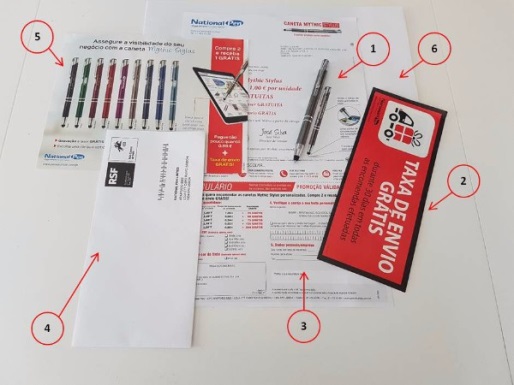
Do your actions speak for you?
When actions speak louder than words. The idea that your deeds are more important than your words is an ancient one, dating at least as far back as Biblical times and possibly further.
The modern version of the phrase began to take shape thanks to French philosopher and writer Michel de Montaigne (1533-1592) who wrote: saying is one thing and doing is another.
In 1628 a British member of parliament, J. Pym, said in the House of Commons that actions are more precious than words, but it was finally up to American president Abraham Lincoln to coin the phrase we use today.
It’s a survival skill
What this makes clear is that our ability to judge someone’s feelings, intentions and opinions is hard-wired into our brains. It is an ability we’ve possessed for generations. In fact, our survival as a species has depended on it.
Yet many of us have never fully understood how to interpret the non-verbal cues we see in our homes and work places every day.
One of the most important recent scientific studies of behaviour and body language was conducted by Stanford University’s science director in their centre for compassion and altruism, Emma D. Seppälä PhD.
She and Prof Amy Edmondson of Harvard Business School have demonstrated extensively the importance of creating a safe environment at work and how verbal and non-verbal communication work together to improve employees’ productivity and their ability to innovate.
“Whether we realize it or not,” says Prof Seppälä, “we are constantly reading each other’s facial expressions and body language to get an idea of where they are coming from and how they’re responding to you.”
It’s written all over your face

From shortly after we’re born, we learn to read the expressions in our mother’s face. When she smiled we felt warm and safe, when she scowled and her eyes narrowed we feared she was rejecting us, so we cried out, alarmed and fearful.
Smiling at someone, especially if you are in a position of power, is an effective way to put them at their ease. They are reassured and eager before you have even spoken.
The smile is such a potent expression, you can tell if a person is smiling – even a stranger – if you listen to them on the phone or in a radio broadcast.
I can see it in your eyes
How many times has someone known that what you’re saying is not what you’re thinking or what you mean? It’s your eyes that reveal the truth every time. Eye contact is the first step towards what psychologists call resonance, the ability to read someone else’s emotions.
Looking down or shifting your gaze to the side is a sure sign that all is not well. You will be perceived as dishonest and that you have something to hide. This behaviour has given rise to the phrase shifty-eyed to describe someone who is behaving suspiciously.
Always maintain eye contact but don’t stare fixedly as that might be interpreted as aggression or non-compliance.
Don’t take that tone with me
The voice is second only to the eyes in revealing our true emotions. Our voice breaks when we’re nervous or lying and sometimes we stutter. In cases of extreme fear, our throat dries and the neck muscles are so tense that we can barely talk at all.
Your words will not reassure someone if your tone is uncertain and a reprimand works better if the words are simple but the tone of your voice indicates their serious intent.
We welcome you with open arms
Sitting or standing opposite someone with your arms or legs crossed is your body’s way of creating an emotional distance between you. It can often mean you’re hostile to the other person’s point of view and you’re going to resist any attempt to change your mind.
Crossed legs, in particular, are associated with lack of confidence. It’s almost as though we’re curling up to protect our vulnerable body parts. Even among friends, people who lack self-assurance or fear embarrassment cross their lower legs and ankles.
Open your arms and stand or sit tall and straight, open your chest and ease your shoulders back to indicate an open mind and a welcoming disposition.

Why can’t we just talk?
In this age of instant communication, why can’t we just rely on talking to each other to convey our feelings? Authors Allan and Barbara Pease suggest in their book The Definitive Book of Body Language that around 65% of interpersonal communication is non-verbal.
The truth is people are not always honest with each other. Learn to read the signs and, in an unthreatening way, ask why someone is giving you mixed signals.
Ron Carucci, best-selling author of Rising to Power suggests we ask questions like, “Tell me how I should interpret your silence,” or “I’m concerned something I’ve said isn’t sitting well with you. Is that true?”
Giving and receiving feedback at work is more difficult for some than others but getting it right is crucial to our success. Mr Carucci tells the amusing story of a leader who he met while coaching CEOs pursuing transformational change for their organizations.
During meetings, whenever contentious issues were being discussed, this senior executive would become painfully verbose, launching into lengthy diatribes in an unconscious effort to calm his feelings of discomfort whenever there was conflict.
One of the ways he tried to improve was to ask his team to raise their hands whenever he was talking too much. The first few times they did, he struggled to contain himself until someone on the team finally said: “If you want us to help you stop rambling you have to agree to actually stop talking when we raise our hands.”
He eventually learned to be brief and to the point by writing out concise statements he could read out at the appropriate time.
When actions speak louder than words
Think about this
Research suggests our attention wanders 50 per cent of the time. You may not fully hear or understand what someone’s saying to you because you’re thinking about your next meeting or your last phone call.
But you can always take note of their actions even if you lose track of their words.
If you liked, then please subscribe to our YouTube Channel for video content. You can also find us on Twitter, Facebook, Instagram and Linkedin.
You will also like
Read more articles from our weekly series
The Business Mentor





